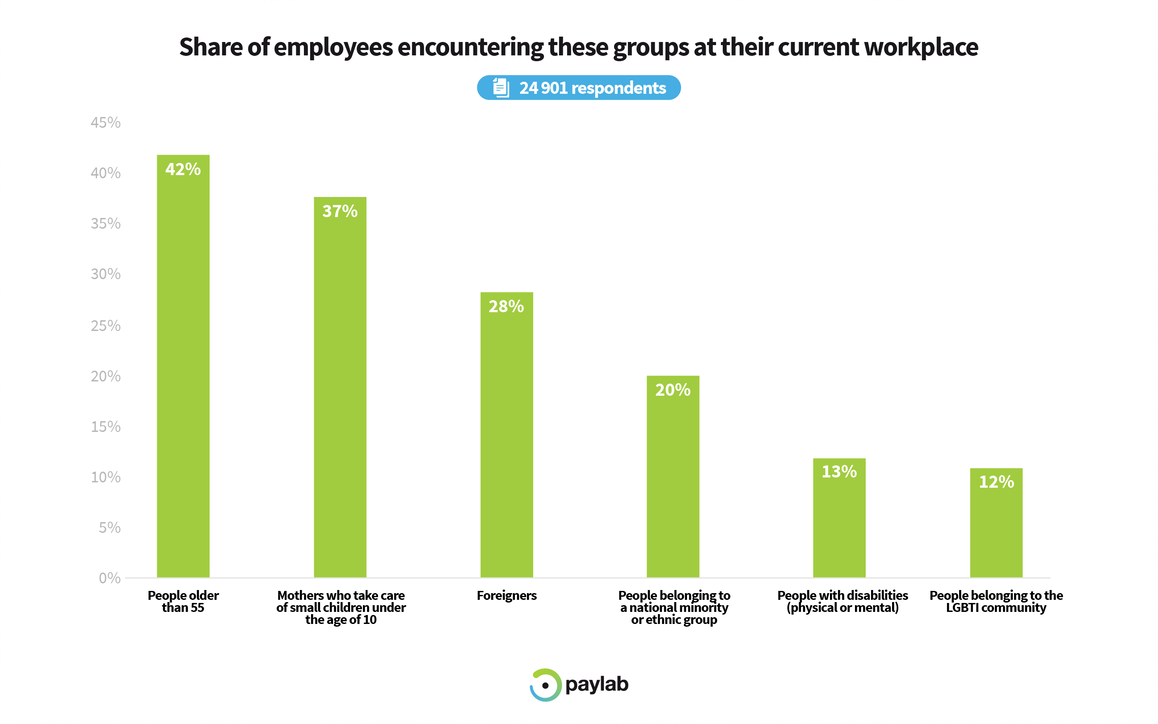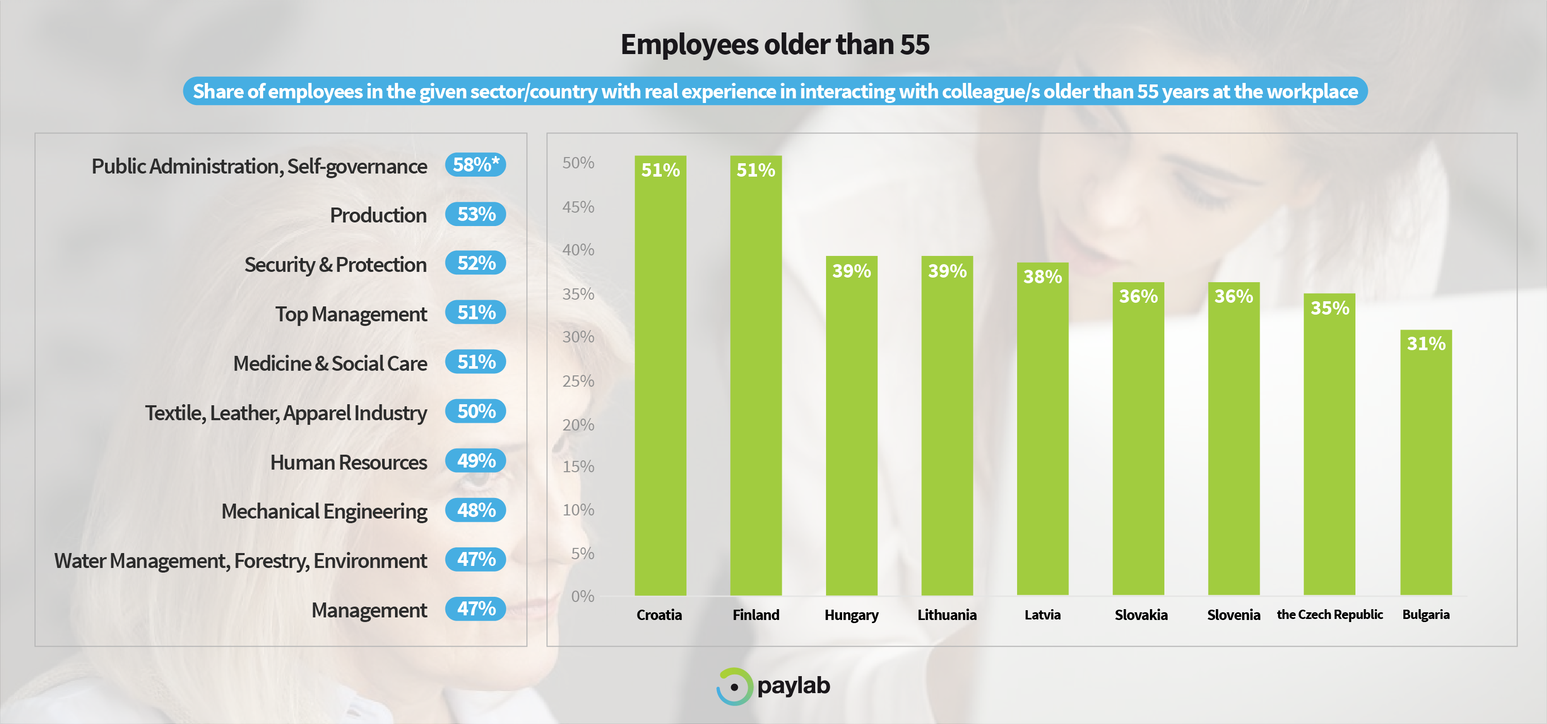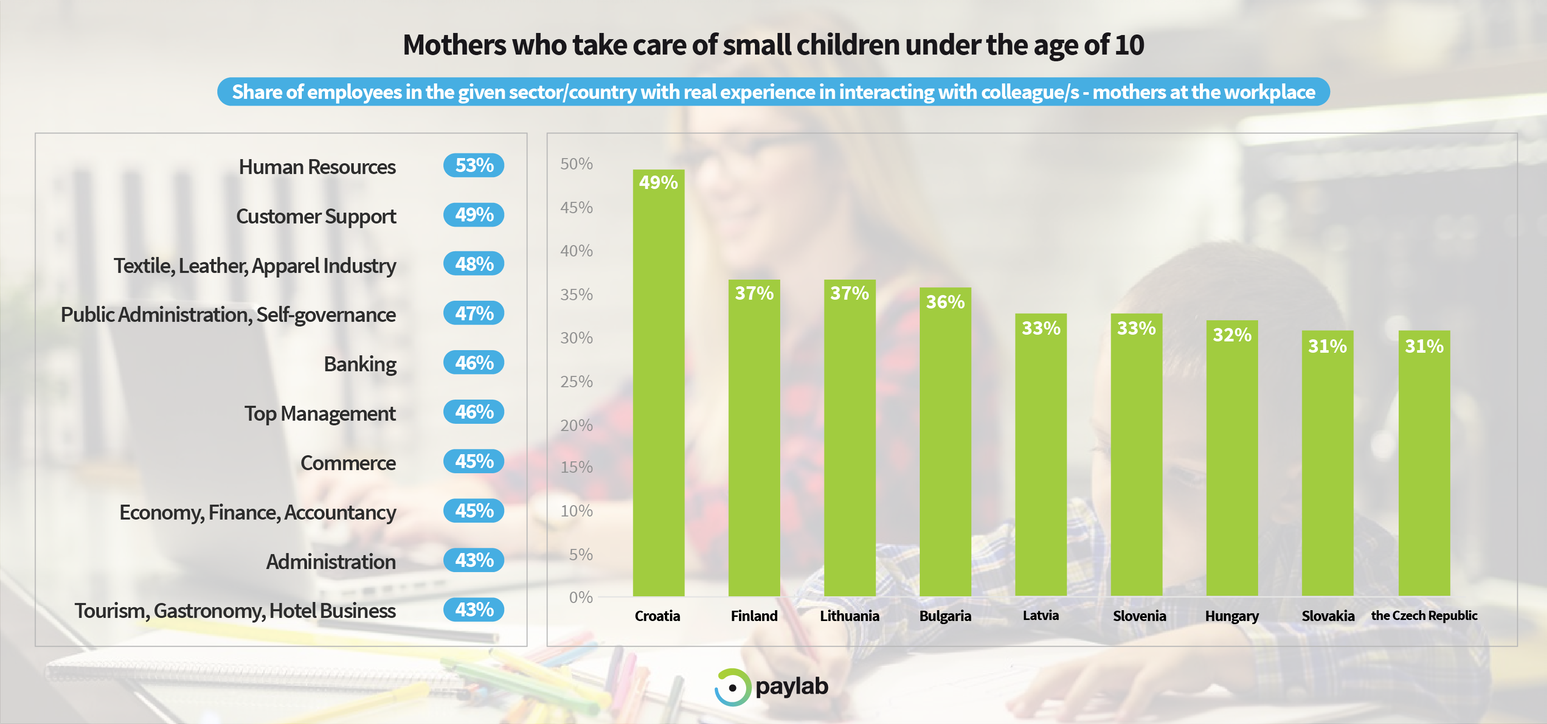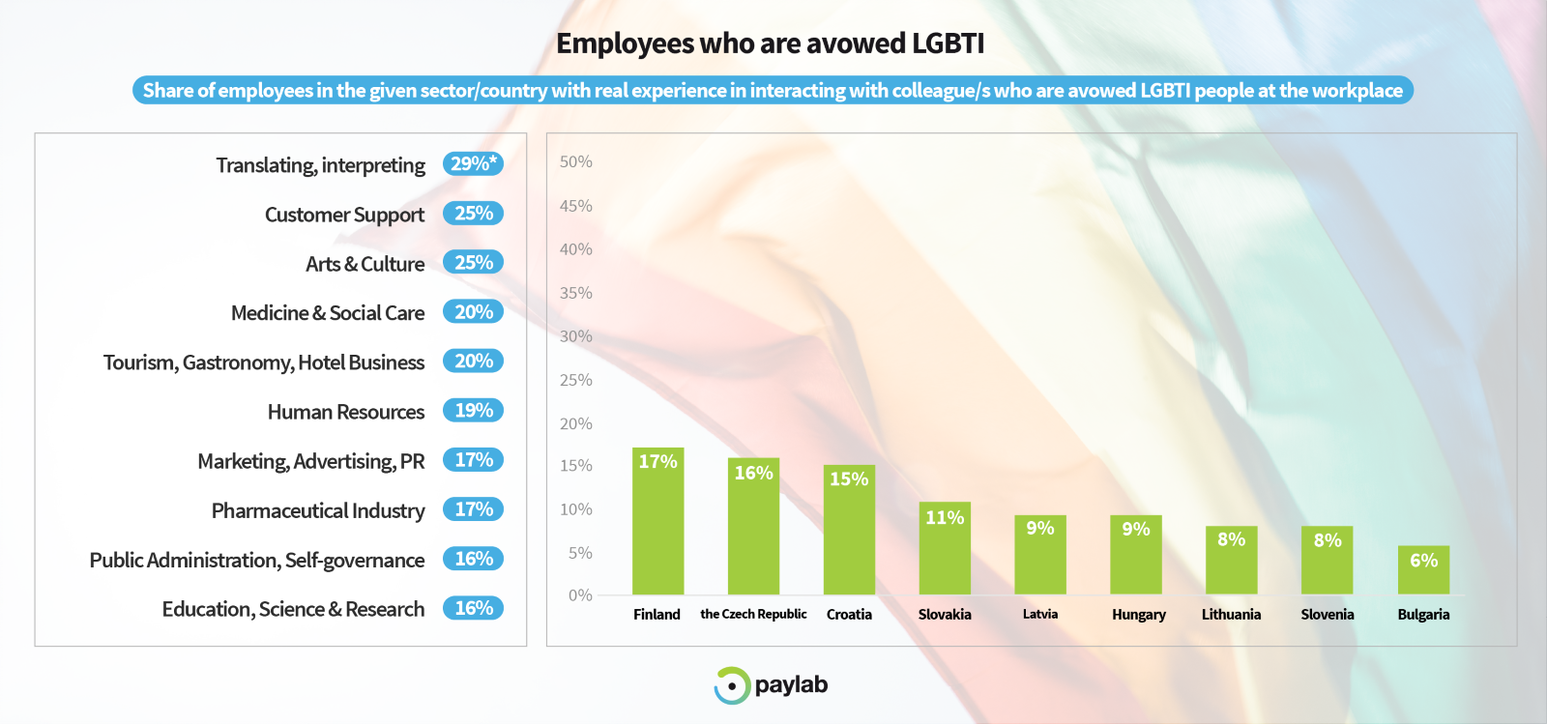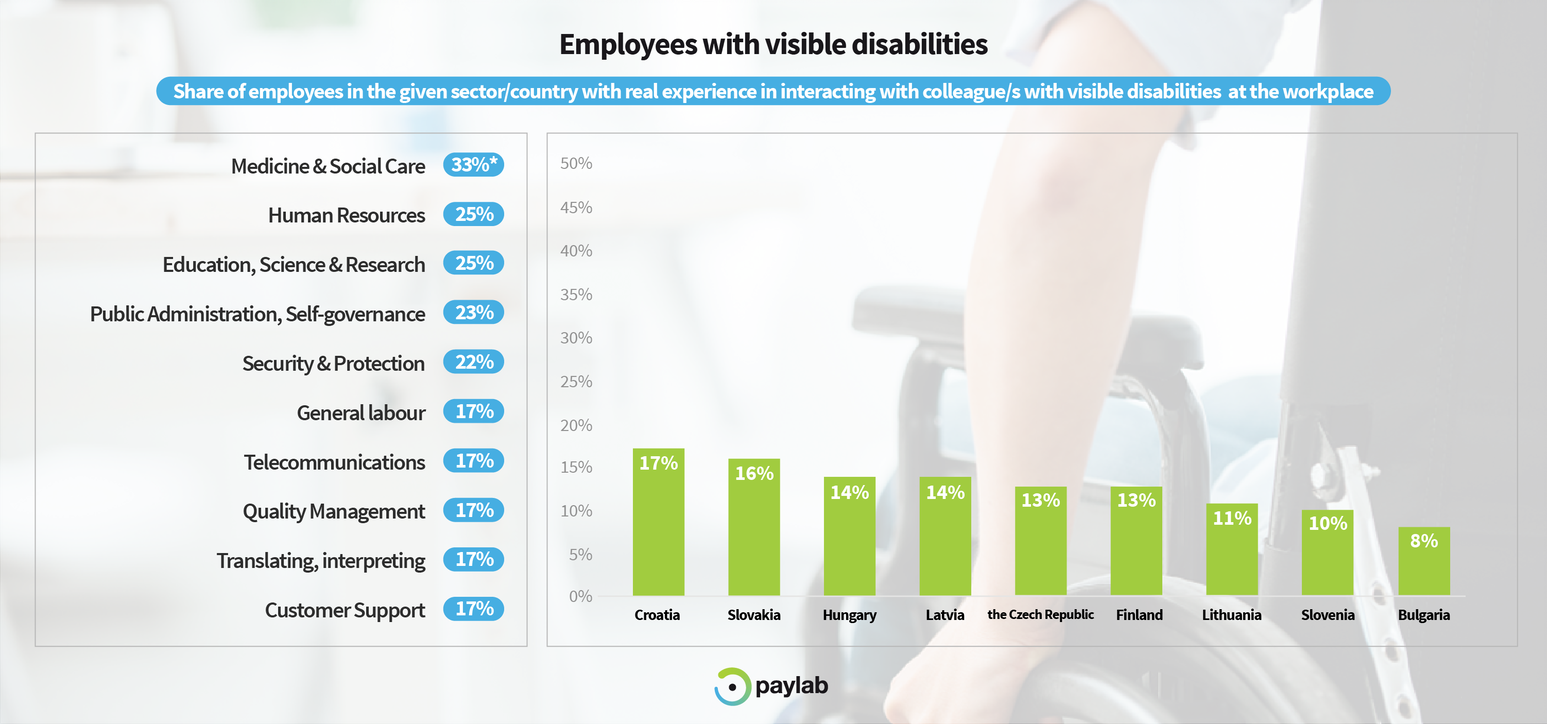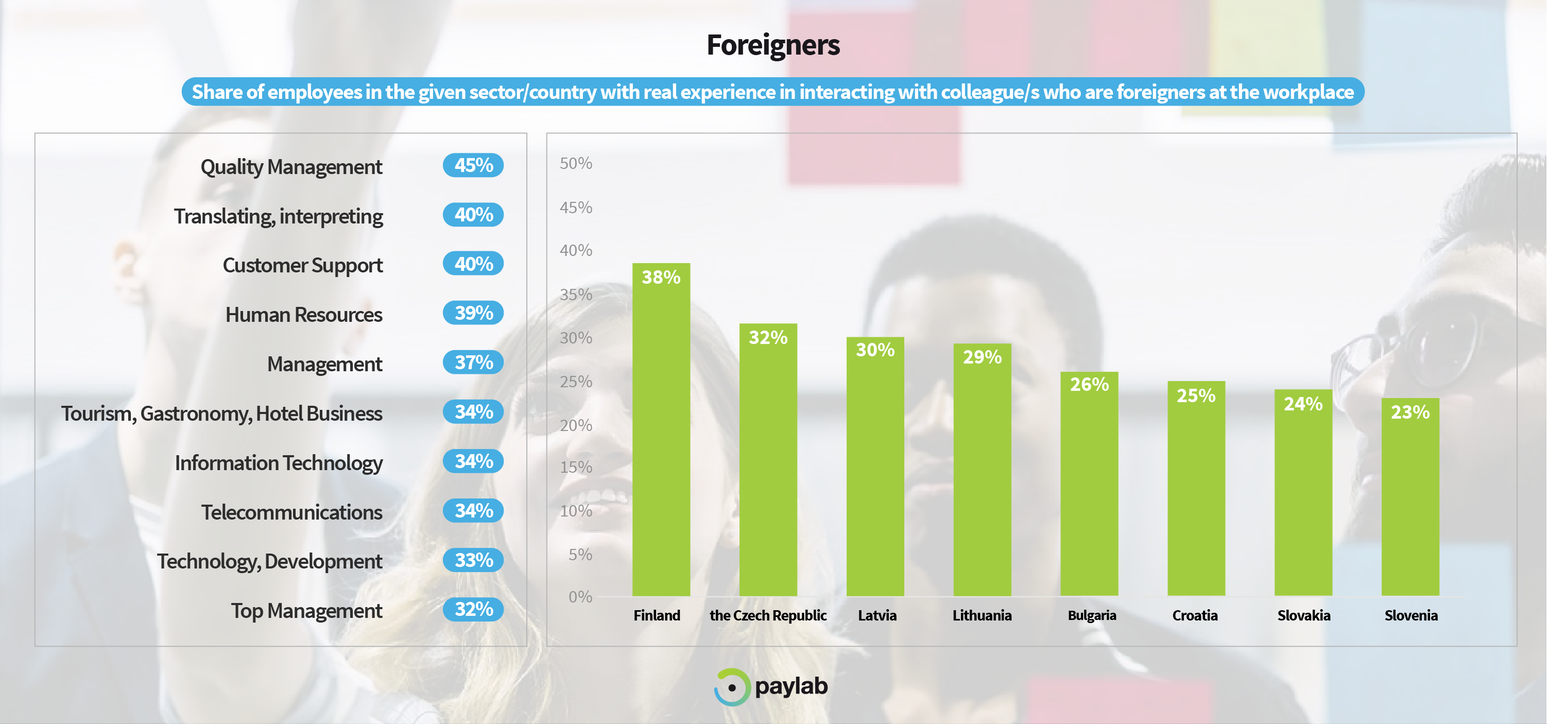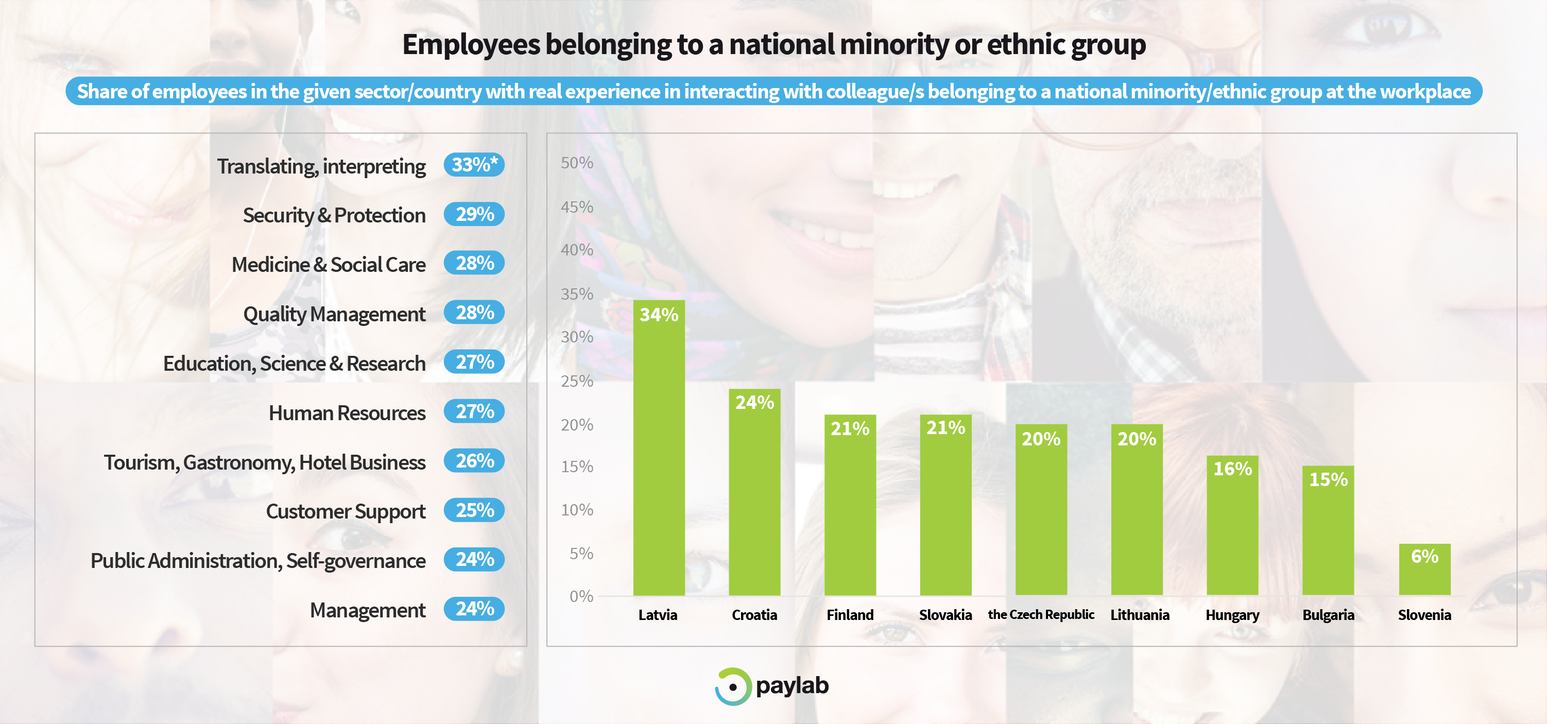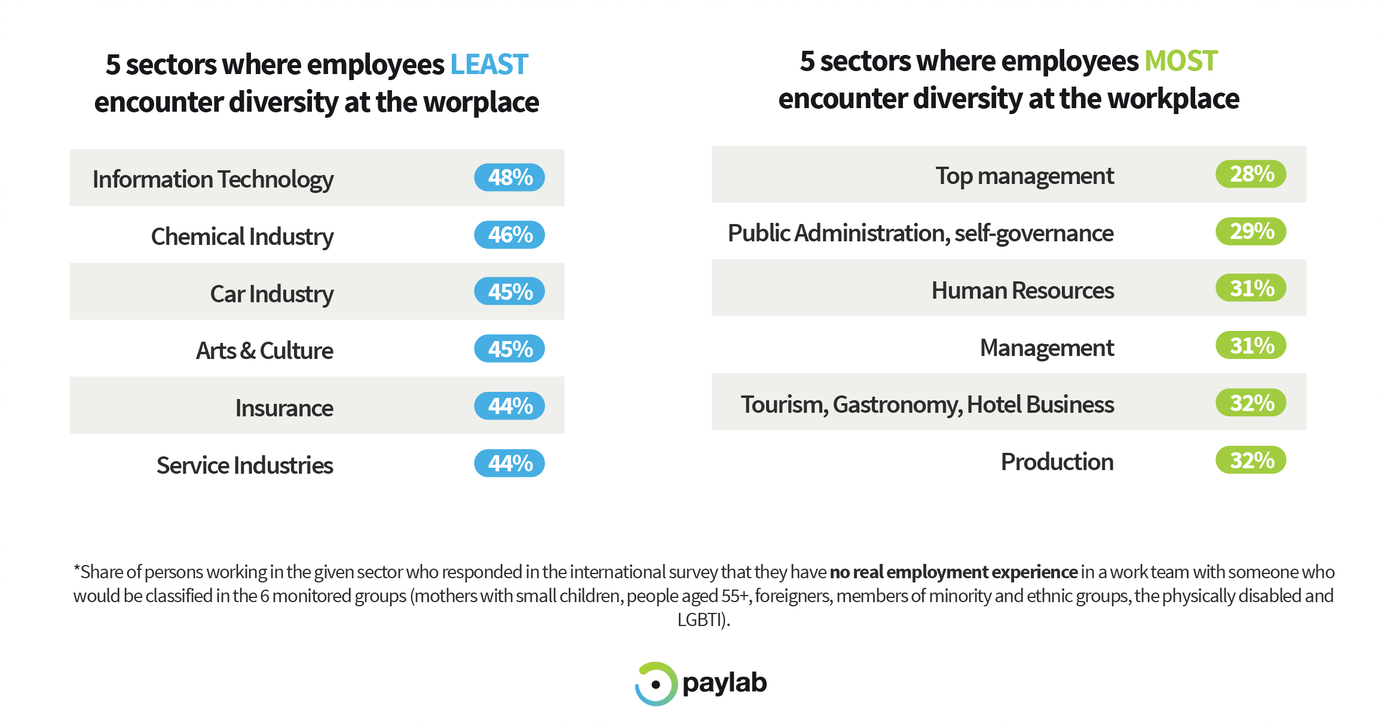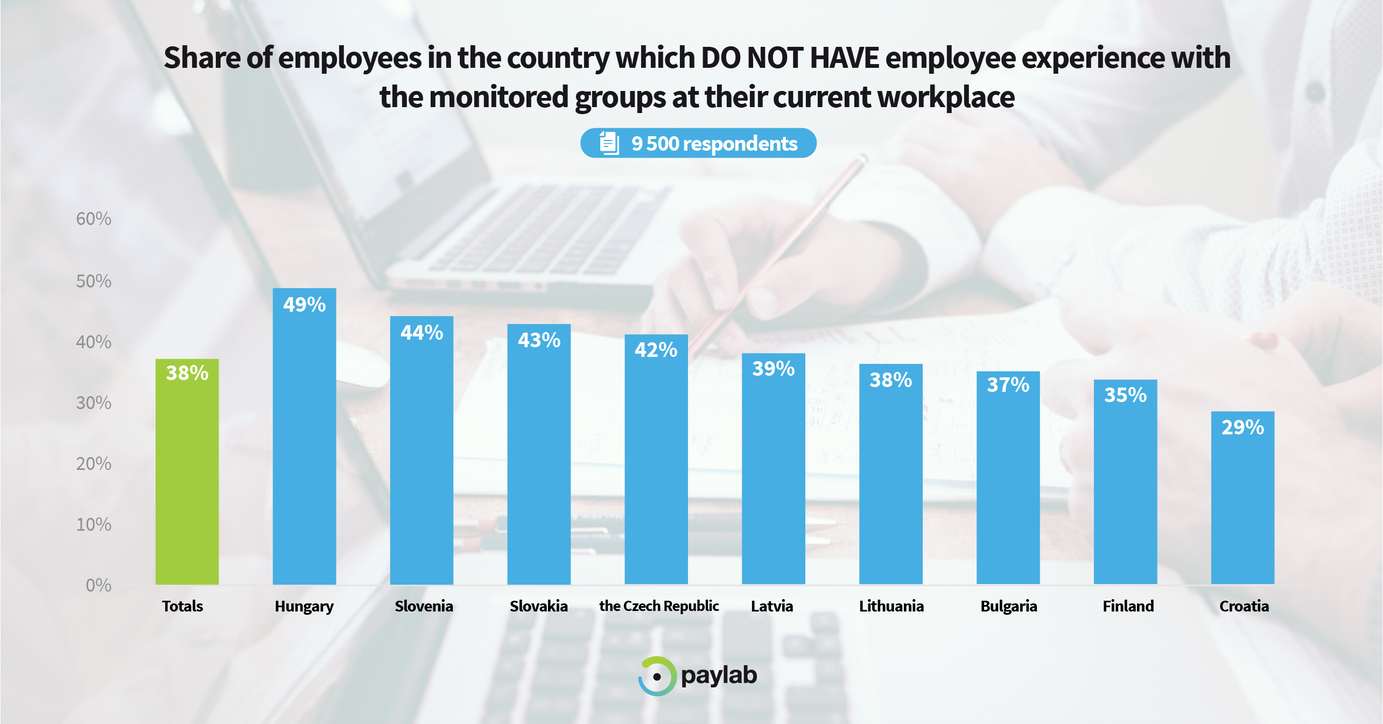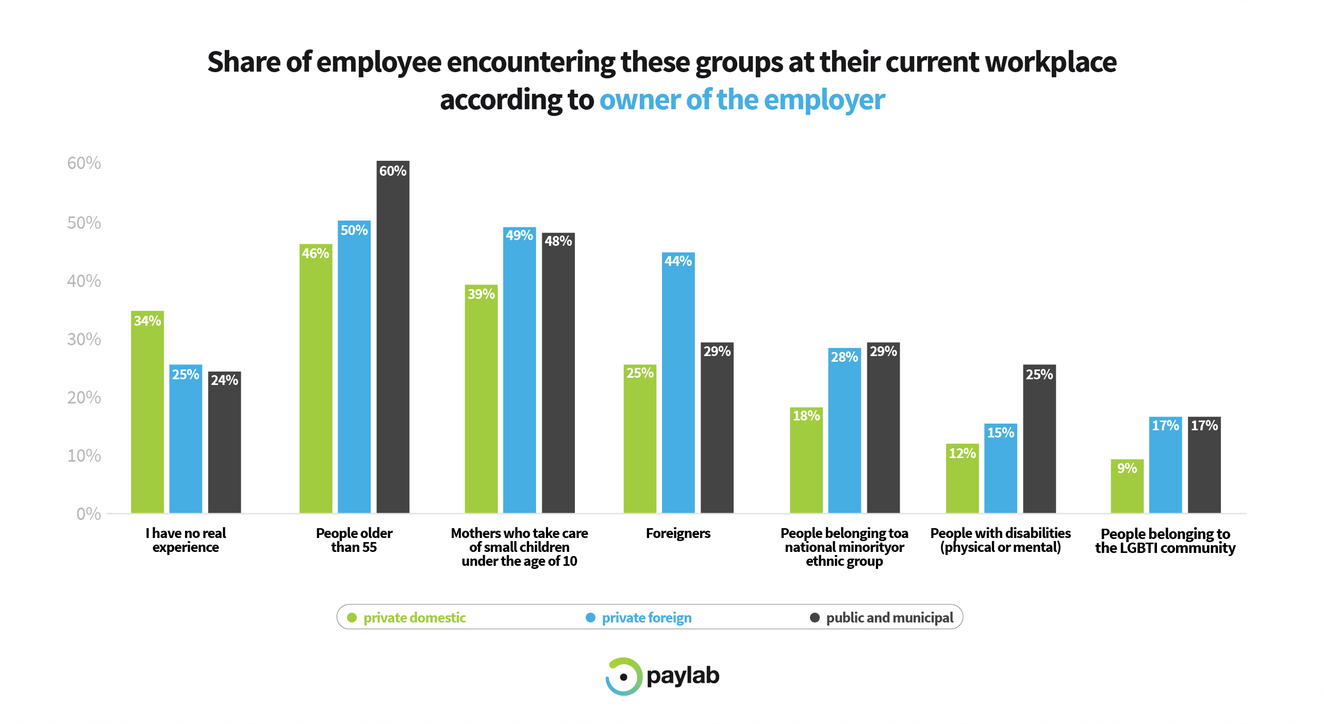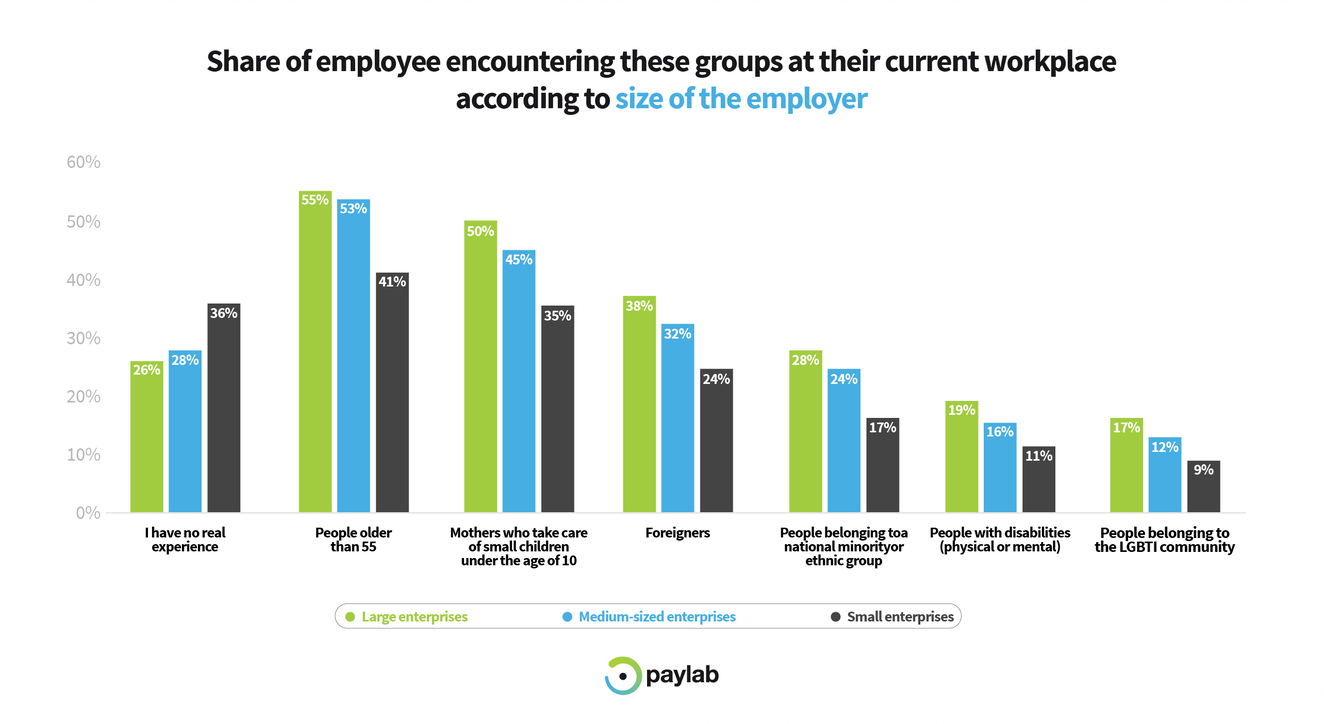Paylab Diversity Study: in which workplaces do employees have diverse working teams?
12 February 2019

The international Paylab Diversity Study shows that four in ten employees in Europe do not experience diversity at their current workplace. This diversity involves the composition of employees at the workplace from a variety of aspects. Paylab focused on 6 key areas: age, maternity, origin, ethnicity or nationality, physical disability and sexual identity/orientation. These aspects often represent a barrier to employment. The goal of the study was to determine the extent to which employees in work teams come into contact with foreigners, members of minority and ethnic groups, persons with physical disabilities, mothers of small children, employees over the age of 55 and persons with a different sexual orientation/identity.
The Paylab Data Research survey was conducted in the second half of 2018 in 9 European countries over a total sample of 24,901 respondents. The objective of the survey was to map out real interactions at work with groups of employees who are often at a disadvantage on the job market and their level of acceptance at the workplace.
Read more why employees who work in mixed teams have fewer prejudices.
The survey was conducted in Finland, in the countries of Central Europe (the Czech Republic, Hungary, and Slovakia), the Balkans (Bulgaria, Croatia, and Slovenia) and the Baltics (Latvia and Lithuania).
Older colleagues and mothers
The survey indicates that employees most often experience diversity by working with colleagues over the age of 55 and mothers of children under the age of 10 who return to work after putting their careers on hold. This is largely related to demographics and the fact that this is the largest group of employees on the job market.
Up to 42% of employees encounter older colleagues at work. Employees most often work with them in state government, manufacturing and in the area of security.
![]()
37% of employees encounter mothers taking care of a small child at the workplace. Employees most often work with them in customer support, the textile industry, state government and banking.
People with disabilities and LGBTI
The lowest level of interaction at the workplace is with disabled employees and those who identify as LGBTI, with only 13% respectively 12% of employees encountering them at the workplace respectively.
People with a visible physical disability primarily work in healthcare and social care, education, state government and as auxiliary staff.
Those who identify as members of the LGBTI community are primarily encountered at work by linguists, customer support staff, artists, health workers, social workers, and employees in tourism and marketing.
Foreigners and minorities
28% of employees encounter foreigners at their workplace. The most common areas are quality management, interpreting and translation services, customer support, tourism and IT, telecommunications and technology.
20% of employees come into contact with national and ethnic minorities at the workplace, most often in the areas of foreign languages, safety and security, healthcare, quality management and education.
Company support for diversity is an expression of a mature corporate culture, with the greatest benefits being the diversity of perspectives and approaches they bring to resolving work tasks. A diverse workforce brings a wealth of opinions to a company and naturally reflects the diversity of society as a whole, providing ample room for self-realisation. Finally, decreasing unemployment rates are pushing companies to make use of the available labour force presented by those groups of employees who traditionally have faced greater barriers to employment. Companies are therefore taking a proactive approach by creating appropriate working conditions and an inclusive work climate.

Employees in the IT sector see the least amount of workplace diversity.
According to the Paylab survey, employees in IT encounter the least amount of diversity. Every second employee in the IT sector does not currently interact with anyone in the 6 monitored groups at their workplace. In terms of jobs, these are primarily qualified technical employees. Other sectors in which there is a high share of employees who do not encounter diversity (44% and higher) are the chemical industry, the auto industry, culture, the insurance industry and services.
Encouragement for supporting diversity in companies most often comes from top management. People in positions of leadership are most perceptive of and aligned with the purpose of workplace diversity. Only 28 per cent of those contacted indicated that they had no contact with diversity at the workplace. Other sectors where the doors are most open to diversity and a larger portion of employees encounter diversity include state and local government, HR, lower-level management, tourism / hospitality and manufacturing.
Four in ten employees do not encounter diversity at the workplace
The level of diversity and composition of employees varies from country to country, largely as a result of employment-related legislation. In terms of countries, the lowest level of workplace diversity is in Hungary, where up to 49% of employees reported no contact with the groups monitored in the survey. Conversely, the highest level of employee experience with diversity in the survey was reported in by Croatia and Finland. These countries excel in employing mothers and older persons. Croatia also leads in interactions with the physically disabled, while Finland leads in terms of the LGBTI community and foreigners.
Large employers give diversity more room
Foreign companies are much more open to greater diversity at the workplace and they employ up to a fifth more foreigners. State government gives more space to employing older employees aged 55+ and persons with physical disabilities. Overall, employees in large companies encounter diversity at the workplace much more frequently with respect to all monitored groups. This is largely related to corporate culture and the standards that large companies seek to introduce into their workplaces.
Read more why employees who work in mixed teams have fewer prejudices.
About the survey
Paylab Diversity Study was conducted in the second half of 2018 in 9 European countries over a total sample of 24,901 respondents. The objective of the survey was to map out real interactions at work with groups of employees who are often at a disadvantage on the job market and their level of acceptance at the workplace. In creating the survey, we collaborated with experts on diversity, and specifically with the non-profit organisation CVEK and the Slovak Academy of Sciences.
The following countries with local salary portals employing Paylab data collection methodology were involved in the survey: Bulgaria (2,359 respondents), the Czech Republic (2,678 respondents), Croatia (4,651 respondents), Finland (4,499 respondents), Hungary (2,605 respondents), Latvia (1,864 respondents), Lithuania (2,640 respondents), Slovakia (2,434 respondents), and Slovenia (1,171 respondents).

